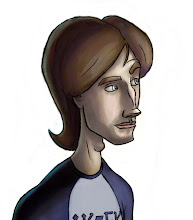Sunday, May 2, 2010
Maus
A groundbreaking graphic novel, the first graphic work recognized as a piece of legitimate literature. It won critical acclaim and even garnish a Pulitzer in its long list of awards. The art style is in black and white with value work accomplished through subtle line work, which blends together to form the values needed. The characters don’t tend to have a thick outline but still have a clear form. The characterizations of different ethnic classes through the use of animals were brilliant throughout this work. Making the Jewish people, the hunted people, mice, while making the Nazis cats, mice’s natural predator, was a very clever, instantly visceral image of the cats rounding up and hunted but cats. Jews of the time were seen as rats, mice, pests by the German people in the 30s and 40s, and they were treated like vermin, just like how we treat mice. The Poles were represented by pigs, but not in a fifthly way, they were more selfish, often truing away and not wanting to have anything to do with the problems of the Jews. The French portrayed as frogs both bring about the stereotype that the French eat frogs and it gave them a sliminess, and grossness, since Art didn’t want to forget the French’s years of Anti-Semitism. The Americans represented by dogs, strong, fast, generally good natured, though often short sighted and easily distracted creatures, wait am I still stalking about dogs or us? There was an interesting scene later on in the novel, after Art and his remaining family get out of the camps, when Art and his father pick up a black hitchhiker, and then part way into the trip, Art’s father leaps into a racist tirade against the poor man, illustrating to Art that even though they went through this experience they still hadn’t learned.
Subscribe to:
Post Comments (Atom)

No comments:
Post a Comment